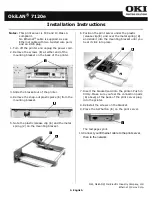
Removal and replacement procedures
Required tools
You need the following items for some procedures:
• T-10/T-15 Torx screwdriver
• T-25 Torx screwdriver (for screws located inside the front panel quick-release levers)
• Flathead scrwedriver
•
HPE Insight Diagnostics software
Safety considerations
Before performing service procedures, review all the safety information.
Preventing electrostatic discharge
About this task
To prevent damaging the system, be aware of the precautions you must follow when setting up the system or
handling parts. A discharge of static electricity from a finger or other conductor may damage system boards or
other static-sensitive devices. This type of damage may reduce the life expectancy of the device.
Procedure
• Avoid hand contact by transporting and storing products in static-safe containers.
• Keep electrostatic-sensitive parts in their containers until they arrive at static-free workstations.
• Place parts on a grounded surface before removing them from their containers.
• Avoid touching pins, leads, or circuitry.
• Always be properly grounded when touching a static-sensitive component or assembly.
Symbols on equipment
The following symbols might be found on the equipment to indicate the presence of potentially hazardous
conditions.
This symbol indicates the presence of hazardous energy circuits or electric shock
hazards. Refer all servicing to qualified personnel.
WARNING:
To reduce the risk of injury from electric shock hazards, do not open this
enclosure. Refer all maintenance, upgrades, and servicing to qualified personnel.
This symbol indicates the presence of electric shock hazards. The area contains no user
or field serviceable parts. Do not open for any reason.
WARNING:
To reduce the risk of injury from electric shock hazards, do not open this
enclosure.
This symbol on an RJ-45 receptacle indicates a network interface connection.
WARNING:
To reduce the risk of electric shock, fire, or damage to the equipment, do not
plug telephone or telecommunications connectors into this receptacle.
Removal and replacement procedures
23
Summary of Contents for ProLiant DL20
Page 12: ...12 Customer self repair...
Page 13: ...Customer self repair 13...
Page 14: ...14 Customer self repair...
Page 43: ...b Remove the fan cage c Remove the fan module Fan 1 Removal and replacement procedures 43...
Page 59: ...8 Remove the expansion board Slot 1 Slot 2 Removal and replacement procedures 59...
Page 89: ...Fan locations Fan locations 89...
Page 96: ...Four bay SFF hot plug configuration Two bay LFF non hot plug configuration 96 Cabling...
















































